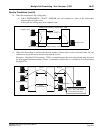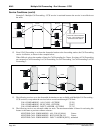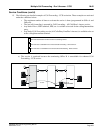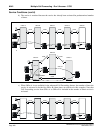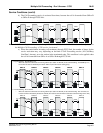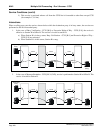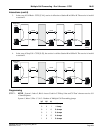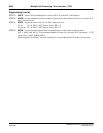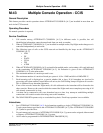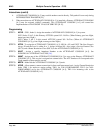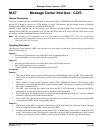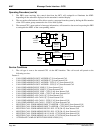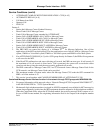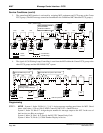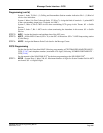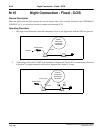
NEAX2400 IPX Feature Programming Manual
NDA-24297, Issue 1
Page 981
Multiple Console Operation - CCIS M-43
M-43 Multiple Console Operation - CCIS
General Description
This feature provides console operation where ATTENDANT CONSOLEs [A-3] are installed in more than one
node in the CCIS network.
Operating Procedure
No manual operation is required.
Service Conditions
1. Call transfer among ATTENDANT CONSOLEs [A-3] in different nodes is possible, but call
identification information cannot be transferred from one node to another.
2. When ATTENDANT CONSOLEs [A-3] are installed in multiple nodes, Day/Night mode changeover is
controlled independently in each node.
3. The following types of calls on the CCIS network are identified by the lamps on the ATTENDANT
CONSOLE [A-3]:
• LDN
• FX
• WATS
• CCSA
• TIE
• ATND
4. When ATTENDANT CONSOLEs [A-3] are installed in multiple nodes, an incoming call is only indicated
at the terminating ATTENDANT CONSOLE [A-3]. No indication is given on the ATTENDANT
CONSOLEs [A-3] at the other nodes.
5. The maximum number of consoles per unit is two.
6. The maximum number of consoles allowed per system is 16 for 1 IMG and 60 for 4 IMGs/IPX-U.
7. Each incoming call is displayed on a console whether idle or busy. If all Attendants are involved in
processing calls when another Central Office call arrives, the Call Waiting Lamp will light on all consoles.
This is Switched-Loop Attendant Operation.
8. If one of the consoles enters the Night mode, all calls addressed to the Attendant will be directed to the
other consoles. However, the console which has entered the Night mode must complete processing of all
calls already connected to its loop.
9. A station can be connected to only one Attendant loop at a time. Any attempt at establishing multiple
connections will result in reorder tone being sent to the Attendant.
10. The NEAX2400 IPX operates only on a switched-loop basis. Fixed-loop operation is not available.
Interactions
1. See ATTENDANT CONSOLE [A-3] for information regarding a single ATTENDANT CONSOLE [A-
3] and system features provided to the ATTENDANT CONSOLE [A-3]. The ATTENDANT CONSOLE
[A-3] must be provided first.
2. For each tenant, only one type of ATTENDANT CONSOLE [A-3] system can be assigned, either normal
or Primary ATTENDANT CONSOLE [A-3] system.
3. ASAT must be programmed for INTERPOSITION TRANSFER [I-5].



